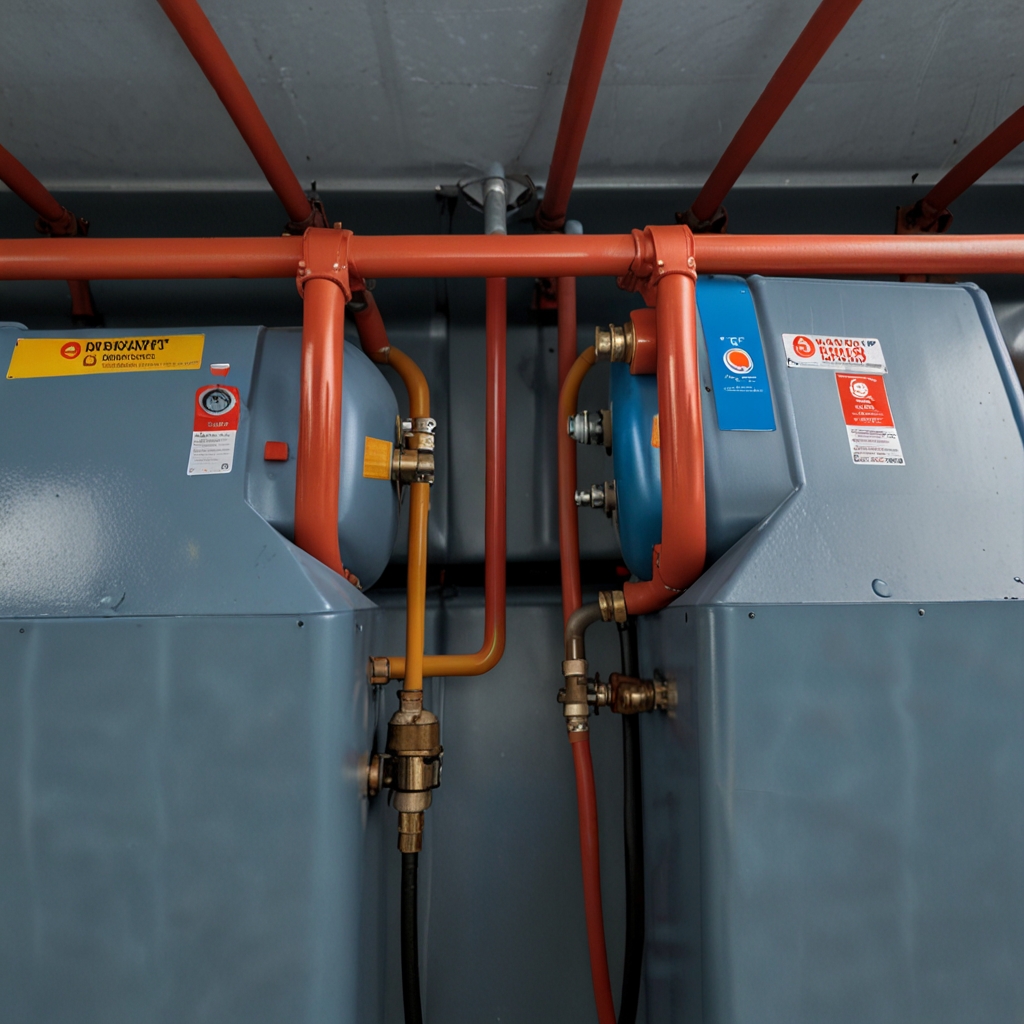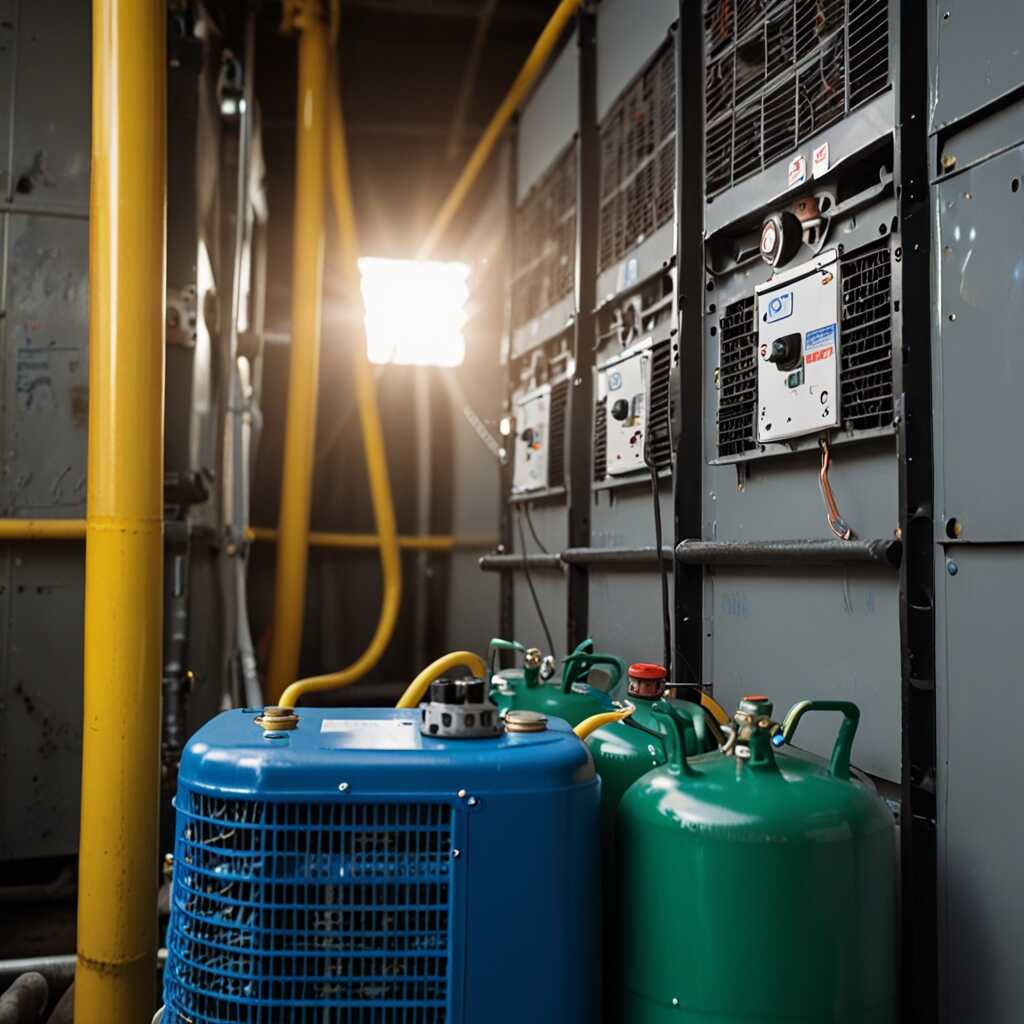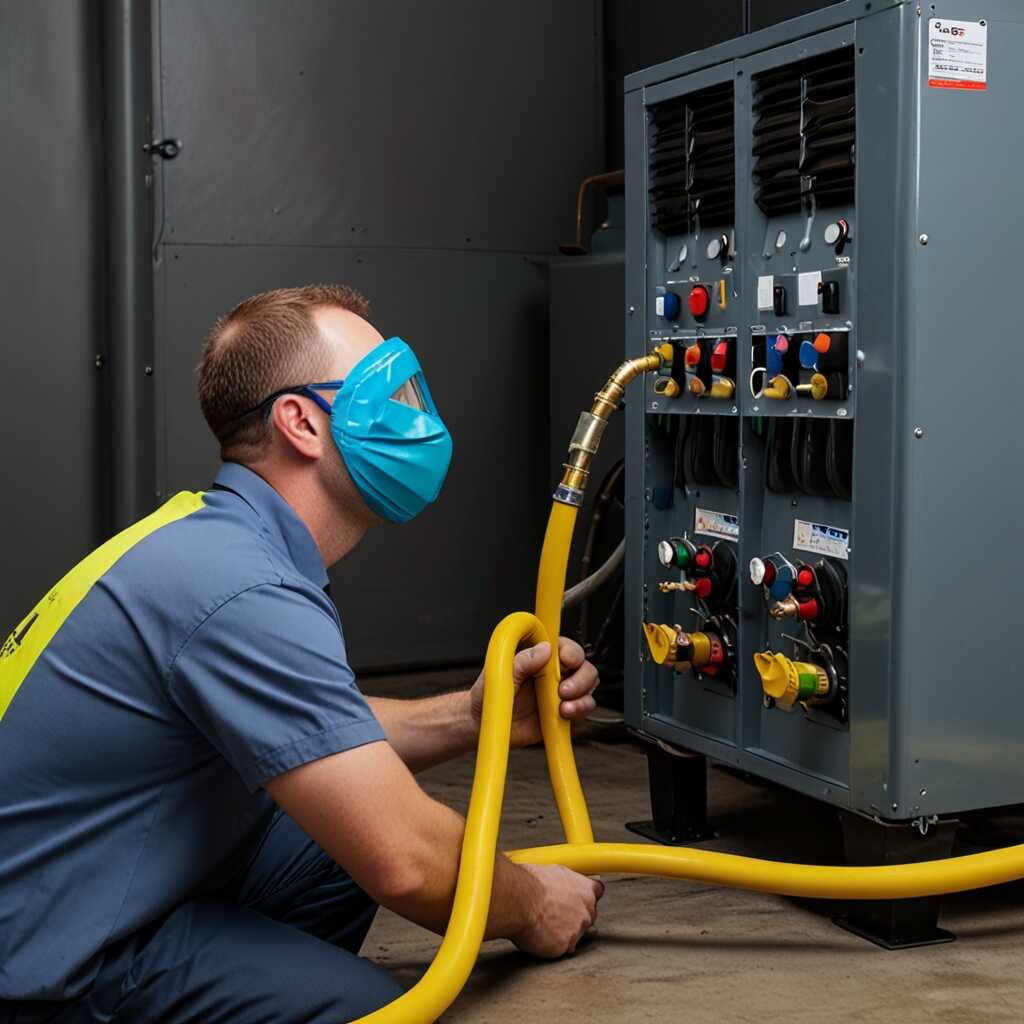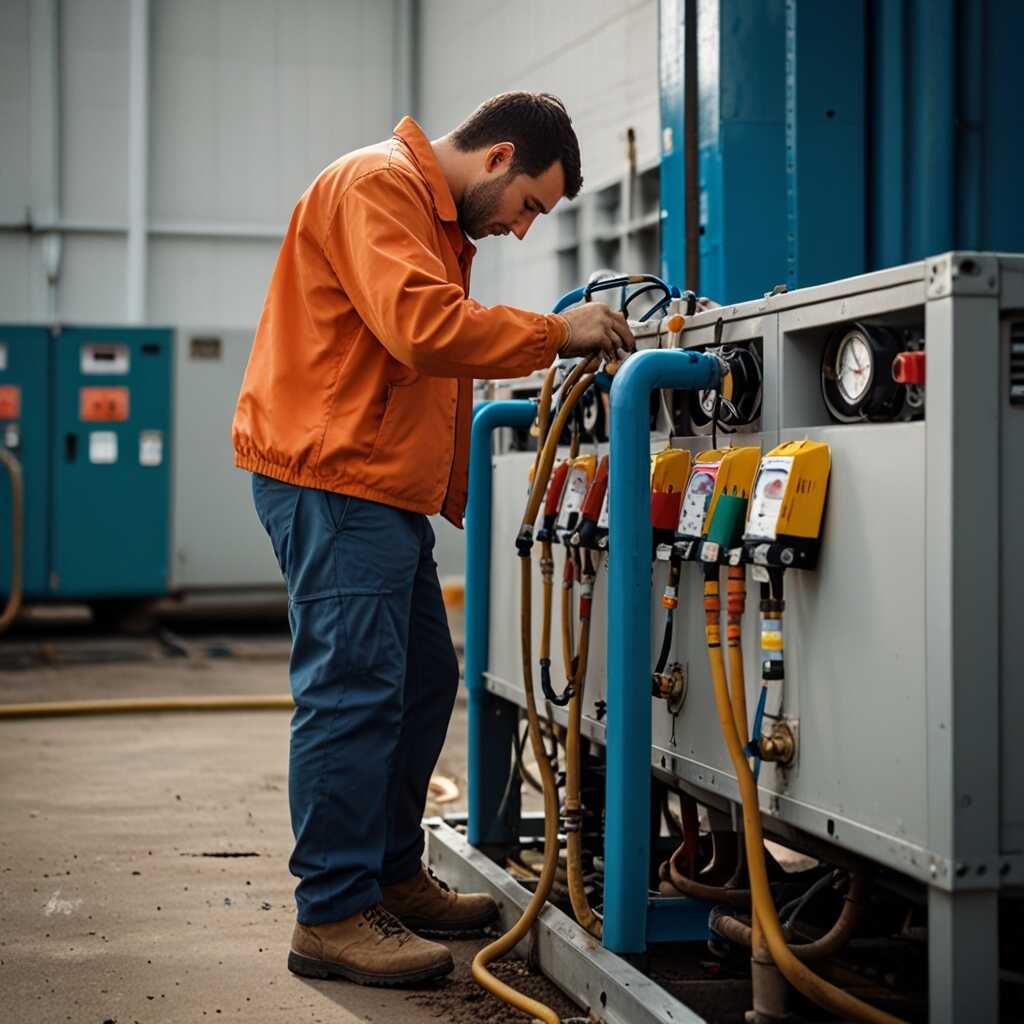Aluminum components in refrigerant recovery machines significantly reduce weight, enhancing portability for HVAC professionals. These lightweight materials allow technicians to easily transport equipment, which is crucial during service calls. At Refrigerant Recovery Pro, we explore how aluminum enhances performance and efficiency in refrigerant recovery systems. Understanding these advancements helps HVAC professionals make informed choices for their equipment needs.
Advantages of Using Aluminum to Enhance Portability in Equipment
Aluminum components offer significant benefits for the portability of refrigerant recovery machines. These advantages stem from their lightweight nature, which can reduce the overall weight of the equipment by up to 30% compared to traditional steel. The strength-to-weight ratio of aluminum is remarkable, providing equal or superior strength to steel while being significantly lighter. This enhancement makes it easier for HVAC professionals to carry and transport refrigerant recovery machines, improving their efficiency and reducing fatigue during operations. The reliability of aluminum components ensures that they can withstand rigorous use, thereby providing long-term value.
Understanding Strength-to-Weight Ratios of Aluminum in Equipment
The strength-to-weight ratio of aluminum is critical in designing portable refrigerant recovery machines. Aluminum maintains structural integrity while being lightweight, offering a ratio that can exceed 3:1 when compared to other metals like steel. Manufacturers utilize this property to create machines that are not only easy to manage but also deliver excellent performance. Testing has shown that machines featuring aluminum components can handle intensive tasks while remaining lightweight. Such efficient designs enable HVAC professionals to work faster and more comfortably, especially in high-demand environments. The innovative approach of using aluminum focuses on enhancing mobility without compromising on reliability.
Key Properties of Aluminum Relevant to HVAC Applications
Aluminum presents unique physical and chemical properties that enhance HVAC tool performance. Its lightweight aluminum components significantly reduce the overall weight of refrigerant recovery machines. This reduction enhances portability without sacrificing durability or reliability. Aluminum’s corrosion resistance ensures longevity in challenging environments, making it an excellent choice for HVAC tools. It also provides good thermal conductivity, contributing to efficient heat transfer. Comparatively, aluminum is easier to shape and fabricate than traditional materials like steel, which offers flexible design options for manufacturers. Testing indicates that equipment utilizing aluminum can efficiently handle refrigerants while maintaining structural integrity over time.
Comparative Durability: Aluminum vs. Steel
When comparing lightweight aluminum components with steel, data reveal significant advantages for HVAC applications. Aluminum’s strength-to-weight ratio is superior, allowing for lighter, sturdy designs that can easily withstand field conditions. Testing results show that aluminum components result in machines that are typically 30-50% lighter than their steel counterparts. This considerable weight reduction facilitates easier transport and handling. Furthermore, aluminum’s resistance to corrosive elements enhances the durability of refrigerant recovery machines, ensuring they perform reliably throughout their usage. HVAC professionals can rely on these aluminum features to deliver high-quality performance during refrigerant recovery operations.

Comparing Traditional Materials With Aluminum for Recovery Machines
Aluminum provides several key advantages over traditional materials like steel and plastic in refrigerant recovery machines. Aluminum components are significantly lighter, with some models showing up to a 40% reduction in weight. This reduction enhances user comfort during transport and operation. In terms of durability, aluminum is resistant to corrosion and offers good structural integrity, ensuring reliable performance over time. For technicians, this means lower fatigue and improved efficiency. Traditional materials, while often sturdy, cannot match aluminum’s balance of lightweight characteristics and corrosion resistance. Therefore, switching to aluminum not only enhances performance but makes equipment easier to manage.
Understanding Weight Reduction and Performance Enhancements with Aluminum
Switching to aluminum components in refrigerant recovery machines leads to substantial weight reduction that directly affects performance. Users can experience a weight cut of around 30-40%, making machines easier to handle without sacrificing reliability. Lightweight aluminum enhances efficiency by allowing for faster setup and mobility, which directly improves on-site results. The performance analysis shows that aluminum’s strength-to-weight ratio is superior, leading many HVAC experts to favor it over traditional materials like steel. Research indicates that machines designed with aluminum can handle rigorous conditions while maintaining maximum efficiency, vital for modern HVAC applications.
Key Statistics on Machine Weight Reduction
- Aluminum components can reduce machine weight by up to 30% compared to steel.
- Some recovery machines weigh as little as 40 pounds with aluminum parts.
- The average refrigerant recovery machine weighs around 60 pounds when made with traditional materials.
- Users can carry aluminum-based machines more easily, improving job site mobility.
- Weight reduction can enhance fuel efficiency in service vans by lowering total load.
- Aluminum parts increase durability, decreasing maintenance costs over time.
- Many technicians prefer machines under 50 pounds for easier handling and transport.

Enhancing User Experience through Lightweight Equipment
Lightweight refrigerant recovery machines significantly improve mobility for HVAC technicians. These machines ease transport and maneuverability. Users report reduced physical strain during long hours on the job. Lighter weights enhance comfort, enabling technicians to work more efficiently. In comparison to traditional models, aluminum components provide excellent reliability and durability while minimizing weight. For example, technicians often prefer aluminum machines because they feel less tired after a full day of use. The average weight reduction can reach over 30%, allowing technicians to work longer with less fatigue.
Understanding Performance Enhancements of Lightweight Refrigerant Recovery Machines
Lightweight refrigerant recovery machines designed with aluminum components deliver impressive performance enhancements. They maintain high efficiency while being easier to transport. Many models provide quick refrigerant recovery times, relying on advanced engineering to optimize speeds. These improvements come without sacrificing essential features streamlined for user-friendliness. Expert reviews indicate that lighter machines also promote better precision in refrigerant recovery processes. Technicians often find these lightweight models more capable, leading to better overall task management and operational efficiency. The combination of weight reduction and performance ensures technicians can handle HVAC tasks with greater confidence and effectiveness.

Important Factors to Consider When Choosing Recovery Machines
When selecting refrigerant recovery machines with aluminum components, focus on features like weight reduction, performance efficiency, and durability. Aluminum components significantly reduce the overall weight of the machine. This makes handling easier during HVAC jobs. Users should check reviews of top brands that prioritize lightweight materials and reliability. Brands like Recovery Pro provide excellent options known for good performance, ensuring they can handle the demands of recovery tasks effectively.
Understanding Weight Reduction in Refrigerant Recovery Machines
The average weight reduction for refrigerant recovery machines using aluminum components can be up to 30% compared to those made from heavier materials. This weight difference enhances portability and ease of use, especially in tight spaces. A lighter machine helps technicians work more comfortably and efficiently, particularly in challenging environments. Choosing a model that balances weight and durability ensures long-term use and reliable performance. Always review product specifications and customer experiences to find the best units that enhance your performance in refrigerant recovery tasks.
Advantages of Lightweight Machine Components
- Reduced weight allows for better portability on job sites.
- Aluminum components improve energy efficiency during operation.
- Lightweight machines tend to have faster recovery rates, saving time.
- Users report less fatigue due to handling lighter equipment regularly.
- With less weight, technicians may avoid injuries related to lifting heavy machines.
- Machines with aluminum parts often feature advanced technology for enhanced performance.
- Lightweight designs enable better storage options in service vehicles.

Importance of Regulatory Compliance and Safety in Lightweight Tools
Understanding the key regulatory standards for refrigerant recovery machines is crucial for HVAC professionals. Compliance with safety regulations involves following guidelines set by the Environmental Protection Agency (EPA) and other organizations. These include rules on refrigerant handling, recovery techniques, and emergency procedures. Using lightweight refrigerant recovery machines can enhance compliance by reducing worker strain and increasing efficiency. When comparing these machines to traditional ones, it’s essential to verify that all safety features meet or exceed regulatory requirements. As of 2025, the maximum refrigerant recovery capacity mandated by regulations is typically calibrated for performance and efficiency. This ensures devices can handle various refrigerants safely and effectively, providing reliable and efficient outcomes in HVAC operations.
Understanding Key Safety Regulations for Lightweight Refrigerant Recovery Machines
For HVAC professionals, understanding key safety regulations related to lightweight refrigerant recovery machines is essential. These regulations cover proper refrigerant handling and recovery techniques that protect both technicians and the environment. It’s important to choose machines that comply with current regulatory standards while offering features that enhance usability and reliability. Lightweight machines are designed for convenient mobility without sacrificing performance, making them particularly effective in fulfilling these requirements. Regular training and technical support further ensure that users are equipped to maintain compliance in their practices. Engaging with resources from Refrigerant Recovery Pro can provide HVAC professionals with information on the latest safety standards and best practices.
Future Trends: Advancements in Lightweight Refrigerant Recovery Technology
Emerging advancements in refrigerant recovery technology emphasize the use of lightweight materials like aluminum. These materials enhance performance and reduce transportation challenges. Companies such as Refrigerant Recovery Pro, along with notable manufacturers like JB Industries and Fieldpiece, are leading this innovation. With a projected reduction in weight of around 30% by 2025, these advancements promise to significantly improve the efficiency of refrigerant recovery equipment, ensuring reliability and ease of use in HVAC applications.
Key Features Driving Lightweight Refrigerant Recovery Technology
Key features driving advancements in lightweight refrigerant recovery technology include high-strength aluminum components designed for maximum durability. These advancements improve the overall reliability of equipment, making it easier for technicians to handle machines without sacrificing performance. Companies are integrating proprietary alloys that enhance structural integrity while maintaining a low weight. Benefits like increased portability and reduced fatigue during transportation are essential for HVAC professionals. By using specialized manufacturing techniques, innovations ensure that these machines deliver excellent efficiency results without the drawbacks typically associated with weighty equipment.
Popular Brands and Their Strengths in the Market
- Brand A offers aluminum recovery machines and boasts a light design and high performance.
- Brand B is known for durable steel machines but comes with added weight.
- Brand C focuses on energy efficiency and lightweight aluminum options, gaining favor among technicians.
- Brand D produces reliable but heavier models, making them less portable.
- Brand E combines lightweight materials with advanced technology, appealing to modern HVAC pros.
- Service fleets gravitate towards lightweight models for ease in handling and setup.
- Individual technicians often prefer well-reviewed brands with solid warranties for peace of mind.
Expert Insights and Recommendations for HVAC Professionals
Aluminum components in refrigerant recovery machines provide significant weight reduction, enhancing portability and ease of use. HVAC professionals benefit from improved efficiency in their daily operations. Aluminum’s reliability allows machines to handle repetitive tasks effectively. Users report better performance and durability compared to traditional steel materials, ensuring long-lasting usage. Choosing aluminum-equipped recovery machines can reduce the machine’s weight by up to 30%. This increase in ease contributes to enhanced work productivity, allowing HVAC technicians to perform their duties comfortably.
Choosing the Right Aluminum Recovery Machines
When selecting an aluminum-equipped refrigerant recovery machine, HVAC professionals should consider the machine’s weight reduction percentage, typically around 30%. Look for models designed for reliability, featuring ergonomic handles for easier transport. Additionally, assess the machine’s performance ratings and user reviews. Machines with excellent reviews often have tested features that maximize efficiency while maintaining durability. Always ensure you select a model equipped with the latest technology for optimal refrigerant management, energizing your work efficiency.